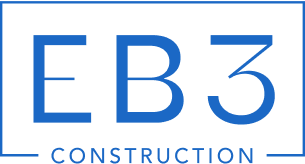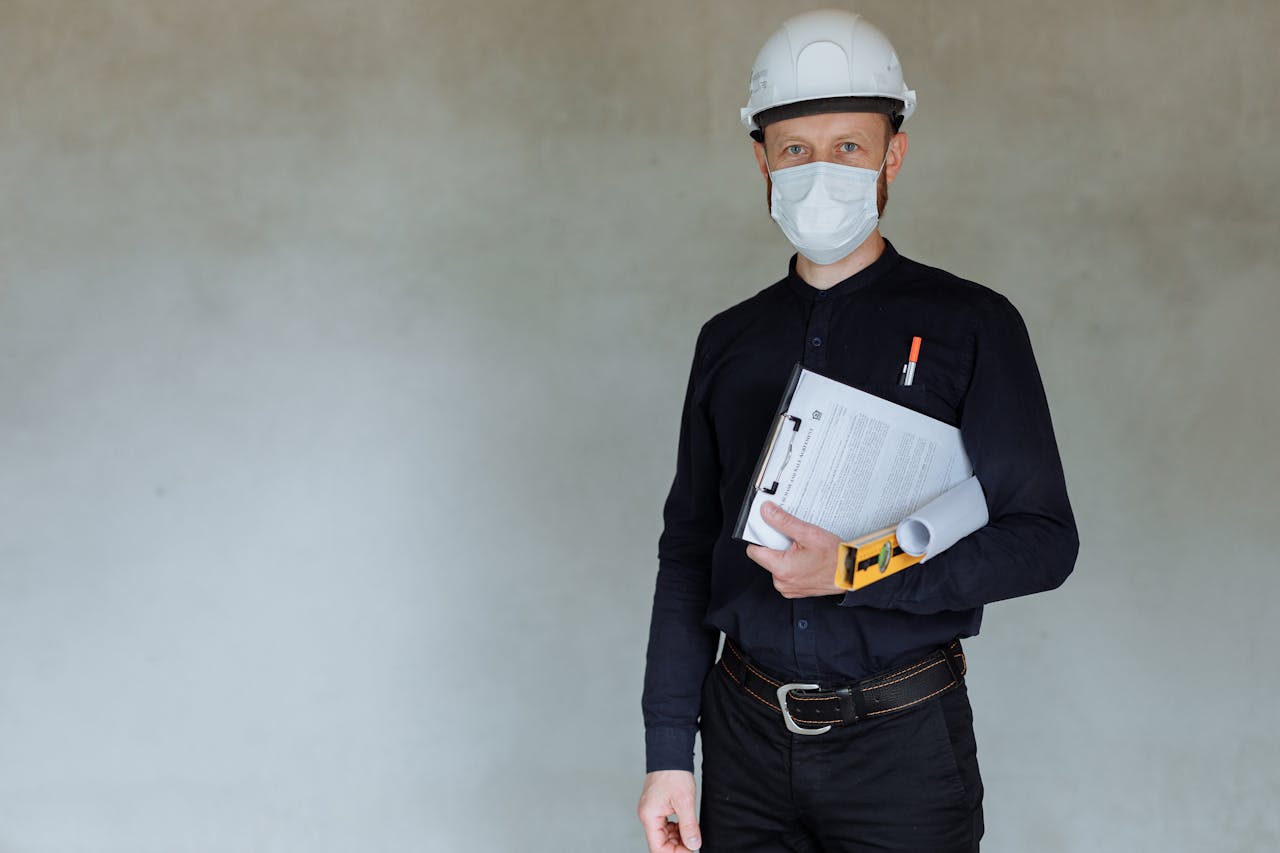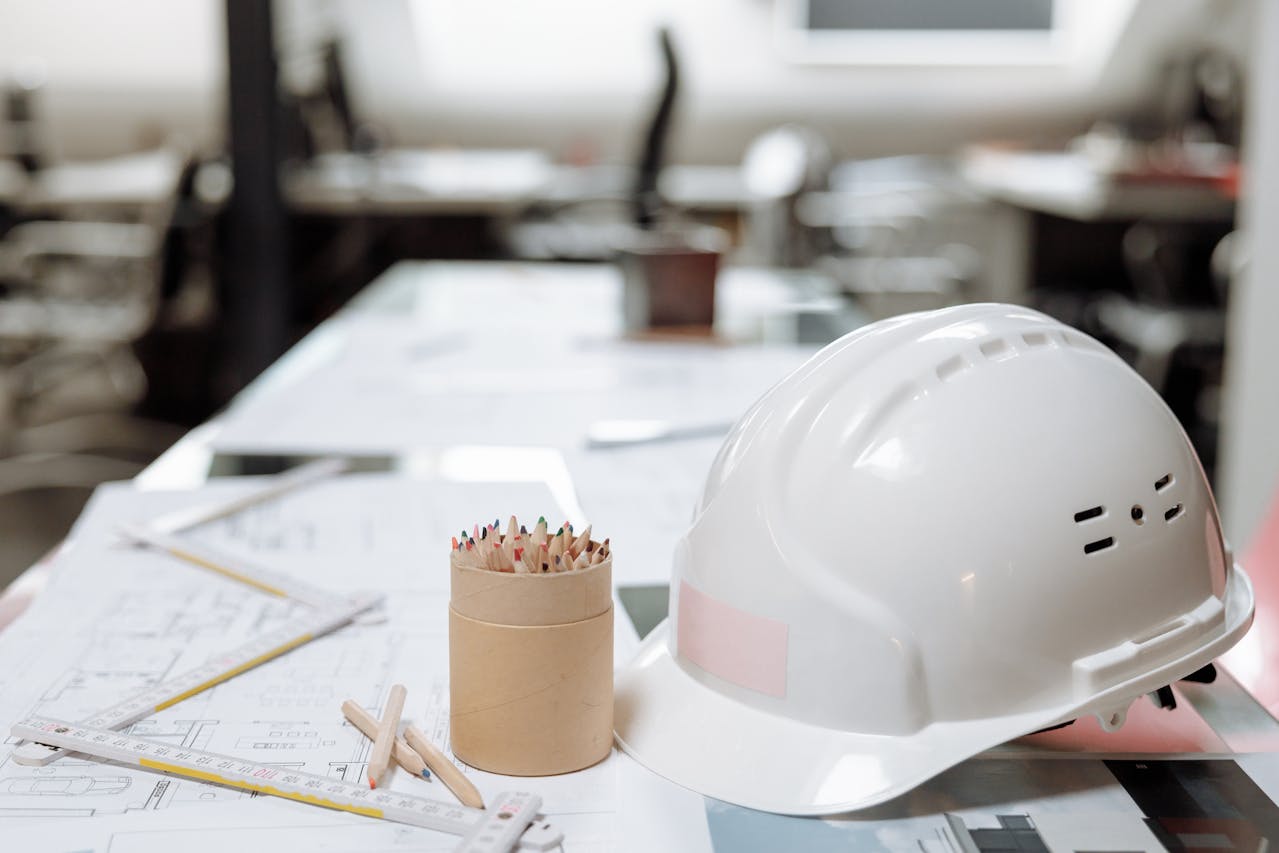El Paso’s warehouse construction market centers on Texas Avenue’s One Stop Shop, where we navigate permits through the city’s streamlined Citizen Access Portal. The Planning & Inspections Department processes applications for industrial facilities that must meet local building codes and operational requirements. We coordinate with the city’s permit review system that handles everything from initial zoning verification to final certificate of occupancy.
Construction costs in Texas depend heavily on material choices and facility complexity. Steel warehouse structures typically run between $45-$75 per square foot, while tilt-up concrete systems cost approximately $70-$120 per square foot. These ranges reflect the building shell only and don’t include interior build-out, MEP systems, or specialty features like fire suppression that can add $2-$7 per square foot. Early coordination with flood zone maps and life-safety requirements prevents costly rework during construction phases.
Disclaimer: Pricing figures are based on publicly available market data and are intended for general estimation purposes as of November 2025. They do not represent a formal quote from EB3 Construction. Actual costs will vary by project scope, location, labor rates, and material prices.
What Does It Cost To Build A Warehouse In Texas, And How Do Choices Affect Budgets?

Texas warehouse construction costs reflect a complex interplay of size, construction methods, and functional requirements. Understanding these variables helps us develop accurate project budgets and make strategic decisions about structural systems, site development, and long-term operational efficiency.
Scale economics drive significant cost differences across warehouse projects. While smaller facilities often run $80-150 per square foot due to fixed costs spread over limited area, larger warehouses achieve substantial economies that can reduce unit costs to $45-80 per square foot. We consistently see this pattern across Texas markets, where 50,000 square foot facilities command markedly different pricing than 10,000 square foot buildings.
Construction Methods Shape Core Costs
Steel warehouse construction typically ranges from $45-75 per square foot in Texas markets. Pre-engineered metal building systems offer speed and flexibility, with structural components that accommodate future expansion needs. Steel’s strength-to-weight ratio allows for clear span designs that maximize usable floor area while minimizing interior columns.
Tilt-up concrete construction commands $70-120 per square foot but delivers enhanced durability and thermal performance. This method involves casting concrete panels on-site before tilting them into position, creating monolithic walls with superior fire resistance. While initial costs run higher, tilt-up facilities often show better long-term value through reduced maintenance requirements and energy efficiency.
The building shell represents the largest single cost component. Steel shells commonly range $45-80 per square foot, encompassing structural framing, roofing systems, and basic wall panels. Tilt-up shells typically cost $70-120 per square foot, reflecting the specialized labor and equipment required for concrete placement and panel erection.
Facility Type Drives Specialized Requirements
Basic storage warehouses generally cost $50-80 per square foot, focusing on simple rectangular layouts with minimal interior systems. These facilities prioritize cost efficiency while meeting fundamental storage and access requirements.
Distribution centers command $75-150 per square foot due to enhanced loading dock configurations, truck maneuvering areas, and sorting systems. We design these facilities with multiple dock doors, reinforced floor slabs for material handling equipment, and electrical infrastructure to support automated systems.
Cold storage facilities require $150-200 per square foot, driven by insulation requirements and refrigeration systems. Specialized vapor barriers, thermal breaks, and heavy-duty HVAC equipment add substantial costs but ensure consistent temperature control for perishable goods.
Interior Build-Out And Systems Add Complexity
Interior build-out costs vary from $10-50 per square foot depending on functional requirements. Basic warehouse fit-outs include concrete floor treatments, basic lighting, and minimal office areas. Complex installations with extensive racking systems, conveyor integration, or specialized work areas push costs toward the higher range.
MEP systems typically add $5-20 per square foot for standard installations. Basic electrical service, LED lighting, and minimal HVAC coverage represent the lower end, while comprehensive climate control, fire suppression integration, and heavy electrical loads for automated systems increase investment levels.
Site Development Impacts Total Investment
Land acquisition costs range dramatically across Texas. Rural locations may offer land at $2-5 per square foot, while urban and industrial zones often exceed $10 per square foot. We evaluate transportation access, utility availability, and local development incentives when assessing site options.
Site preparation adds $5-15 per square foot through excavation, grading, and utility connections. Projects requiring extensive earthwork, storm drainage systems, or challenging soil conditions trend toward higher preparation costs. We coordinate geotechnical studies early to identify potential site challenges that could affect budgets.
Professional services typically represent 8-15% of total construction costs. Architectural and engineering fees vary based on project complexity, with specialized facilities requiring more extensive design development than standard storage buildings.
Texas Climate Considerations Add Value
Heat-reflective roofing systems and enhanced insulation add upfront costs but reduce long-term operating expenses. Texas’s intense summer conditions make thermal performance crucial for energy efficiency and occupant comfort.
Stormwater management systems address Texas’s variable precipitation patterns and local drainage requirements. While these systems add construction costs, they prevent costly water damage and ensure compliance with municipal stormwater regulations. We design integrated drainage solutions that protect facilities while meeting environmental standards.
How Long Do Permitting And Construction Take In El Paso, And How Can Teams Reduce Delays?
Permitting timelines in El Paso fluctuate significantly based on project complexity and application quality. Simple tenant improvements typically complete plan review in about 2–4 weeks, while new or complex construction requires 6–12 weeks for initial reviews. Each revision cycle extends the timeline by approximately 1–3 weeks, making complete initial submissions critical for staying on schedule.
Seasonal workloads create additional variability in processing times. Spring and summer months often see increased department workloads as construction activity peaks, potentially extending review periods beyond standard timeframes. We account for these seasonal fluctuations when developing project schedules and advise clients to submit applications during slower periods when possible.
Expedited Plan Review Options
The City of El Paso offers expedited plan review services that can reduce processing times by 30–50% for qualifying projects. Projects valued at $300,000 or greater pay a $645 fee plus $156 per hour for expedited review, while smaller projects under $300,000 pay $256 plus $94 per hour. These fast-track options prove valuable when construction schedules are tight or when holding costs make delays expensive.
Expedited reviews work best with complete, code-compliant submittals. Incomplete applications still face the same revision cycles, negating much of the time advantage. We structure our submissions to meet expedited review requirements from the start, ensuring clients receive maximum benefit from the additional investment.
Phased Permitting Strategies
A phased permitting approach allows construction to begin on approved elements while other systems continue through review. Foundation permits can typically be secured earlier than full building permits, enabling site preparation and structural work to proceed. This strategy proves particularly effective for large warehouse projects where site work, foundations, and building shell construction follow logical sequences.
We coordinate phased permitting carefully with overall construction schedules. Early phases must align with subsequent permit approvals to avoid work stoppages. The Citizen Access Portal tracks multiple permit applications, helping teams monitor progress across different project phases and coordinate inspection schedules effectively.
Construction Timeline Factors
Typical Texas warehouse construction runs 6–12 months depending on building size, system complexity, and supply chain conditions. Steel warehouses often construct faster than tilt-up concrete structures due to prefabrication advantages and simpler foundations. Distribution centers with complex MEP systems require longer schedules than basic storage warehouses.
Supply chain disruptions continue affecting construction timelines across Texas. We factor potential delays into project schedules and maintain relationships with multiple suppliers to minimize impact. Early material procurement and flexible sequencing help maintain progress when specific components face delays.
Delay Reduction Strategies
Complete plan submittals eliminate the most common source of delays in El Paso permitting. We ensure all required documentation accompanies initial applications, including life-safety calculations, energy code compliance forms, and coordinated MEP drawings. Missing elements trigger automatic rejections that reset review timelines.
Rapid response to review comments keeps projects moving through revision cycles. We typically address reviewer feedback within 48 hours and resubmit with detailed response memos. Clear communication with plan reviewers helps resolve questions quickly and demonstrates commitment to code compliance.
Early coordination of inspections prevents bottlenecks during construction. We schedule inspections in advance and maintain flexibility to accommodate inspector availability. Pre-inspection meetings help identify potential issues before formal reviews, reducing the likelihood of failed inspections that delay progress toward certificate of occupancy.
What Warehouse Interiors And Specialties Should Be Planned Early?

Storage systems and space-use components demand coordination during the shell design phase, not after the building permit closes. We approach this by integrating warehouse interiors into structural calculations, fire protection layouts, and electrical planning from project start.
Storage Systems That Shape Structural Design
Pallet racking systems create concentrated loads that affect foundation design and slab thickness. Standard selective racking typically imposes 4,000 to 8,000 pounds per upright, while high-density storage like drive-in or push-back systems can generate 12,000+ pounds per upright. Floor loading calculations must account for these concentrated forces early in the design process.
Mezzanine systems add complexity beyond simple storage. These platforms require structural coordination with the building’s lateral force system and fire protection coverage. Clear height planning becomes critical when mezzanines occupy warehouse space, as sprinkler system design and egress routes must accommodate the multi-level configuration.
Vertical carousel storage systems offer space efficiency but demand specific electrical and structural provisions. These automated systems require dedicated power feeds, control wiring, and precise floor flatness tolerances. We coordinate these requirements with the electrical contractor during the shell construction phase to avoid costly retrofits.
Flexibility Features And Space Division
Large warehouse spaces often benefit from operable walls and partitions that allow tenant reconfiguration over time. These movable systems require structural attachment points, electrical provisions for motorized operation, and fire-rated assemblies that maintain the building’s life safety compliance. The design must accommodate partition tracks and electrical rough-ins during shell construction.
High-density storage systems like automated storage and retrieval create specific environmental demands. Temperature control, humidity management, and dust protection affect HVAC design and building envelope performance. We coordinate these specialty requirements with mechanical engineers early to ensure proper system sizing and ductwork routing.
Construction Specification Divisions
Division 10 specialties include items like toilet accessories, fire extinguisher cabinets, and signage systems that require structural backing and electrical connections. Division 11 equipment encompasses loading dock equipment, overhead doors, and material handling systems that affect building openings and structural loads. Division 12 furnishings cover built-in storage, workstations, and millwork that interface with electrical and HVAC systems.
Early coordination of these divisions prevents conflicts between trades and ensures proper permit documentation. Each specialty item that affects structural loads, fire protection, or electrical systems requires inclusion in the permit drawings and calculations.
Code Compliance And Permit Coordination
Fire protection coverage must extend to all storage areas and mezzanine levels. In-rack sprinklers become necessary when storage heights exceed fire code limits or when commodity classification demands enhanced protection. Egress planning must account for aisle widths, travel distances, and exit access from elevated storage areas.
Energy code compliance affects warehouse lighting, HVAC controls, and building envelope performance. Storage system layouts influence lighting design and automatic shutoff controls required by current energy codes. We verify specialty permits through the Citizen Access Portal and coordinate inspection scheduling to align with overall construction progress. This approach prevents delays and ensures code compliance verification occurs at appropriate construction milestones.
Conclusion: Key Steps For Warehouse Construction In El Paso

Successful warehouse construction in El Paso starts with thorough due diligence and systematic planning. We prioritize early site investigation to identify zoning requirements, flood zone restrictions, and historic overlay considerations that could impact project approval. Using established Texas benchmarks allows for realistic budgeting across all major components including structure type selection, shell construction costs, interior build-out requirements, MEP system integration, comprehensive site work, and professional service fees. This foundational approach prevents cost overruns and ensures project feasibility from the outset.
We streamline the permitting process by establishing clear workflows through El Paso’s One Stop Shop and leveraging the Citizen Access Portal for application tracking and status updates. Our approach accounts for all fee structures including plan review costs at 65% of building permit fees, the 5% technology surcharge, inspection fees, and potential impact fees that can significantly affect budgets. We coordinate life-safety documentation and International Energy Conservation Code compliance early to prevent costly rework during plan review cycles. Building realistic project timelines with built-in contingencies for reviews and revisions helps maintain schedule integrity while considering expedited and phased permitting strategies when appropriate.
Ready to navigate El Paso’s warehouse construction requirements? Contact EB3 Construction to discuss your industrial facility project.




